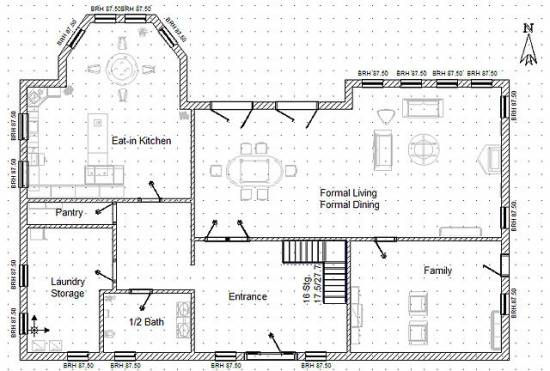-
Lot Size1,177 sqft
-
Home Size1,258 sqft
-
Beds3 Beds
-
Baths3 Baths
-
Year Built1976
-
Days on Market1
Hone Your House-hunting Skills: Learn to Read a Floor Plan
- Real Estate Tips
- February 26, 2015

There are all sorts of skills people need when they embark on a house-hunting journey. Knowing how to research a neighborhood is an important one, as are checking on local schools, investigating crime rates, and getting comfortable with mortgage math (all of which have been discussed in this space!).
One of the more technical, but surprisingly fun (trust me!) skills you can acquire is how to read a typical floor plan. It is more common these days, due to the Internet, for prospective home buyers to see a floor plan and photos before visiting the actual house. Anyone can look at pictures, but camera angles and lighting are often deceiving. Floor plans (which used to be called blue prints) don’t lie, and if you are even minimally adept at reading them, your home search will be that much easier.
You can find much more by doing a routine online search and digging a bit deeper into the details. Visit Wikipedia for a very good explanation that will get you started and offers additional resources.
Basic training at “floor plan boot camp”
Here are the essential facts about floor plans to get your feet wet:
- Floor plans can be intimidating at first, but after just a few minutes of learning the “keys,” you’ll be off and running. Remember, even a very rudimentary plan will show you the size of the home, a detailed breakdown of square footage for each room, where staircases are located, where windows and doors are, and what type of walls support each section of the structure.
- Know that you are looking down, into the house from above. Some artsy plans offer other perspective but traditional plans are all alike in this regard.
- For each room the area is listed, along with any non-standard heights. For example, you might see a large square that is labeled, “FMLY RM- 20`x28`, 9`- hgt” That simply means the family room is 20 feet by 28 feet, and features a slightly non-standard ceiling that is nine feet high.
- Architects use self-explanatory abbreviations for room names, so you’ll be able to guess each one correctly. MSTR BTH and BSMT (master bath and basement) are good examples. Just use phonetic reading skills and you’ll do fine.
- So that you can plan furniture placement, notice (in the image above) how doors are indicated. Their line is extended from the wall to show which way they open. This might seem trivial unless you’ve ever tried to put a refrigerator in the “wrong” place, and been unable to fully open a nearby door!
- Windows are the sections along a wall that are shown with triple parallel lines. The plan will also show the size of each window, and sometimes its height from the floor.
- After you study a floor plan and get a general feel for where everything is, it’s time for the fun part. Imagine yourself entering the front door and walking through the house. As you walk into and out of each room, stop and make note of what you’d see (based only on what is in the floor plan). This is a valuable exercise that can give you an authentic feel for the space, even before you see it in person. Can you imagine where your favorite furniture pieces should go? That colorful painting you love so much? The cat’s bed? Your favorite rocker? Don’t be afraid to “decorate” as you do your virtual walk-through.
Use floor plan skills to enhance your search
Once you get comfortable with floor plans, you’ll be able to “scan” homes that are listed on the Internet with ease. Combining your keen eye for photos and your newfound skills with floor plans, searching for homes will become a truly educational experience. You will be a much more informed consumer, and will know what to look for in each house that catches your interest.





